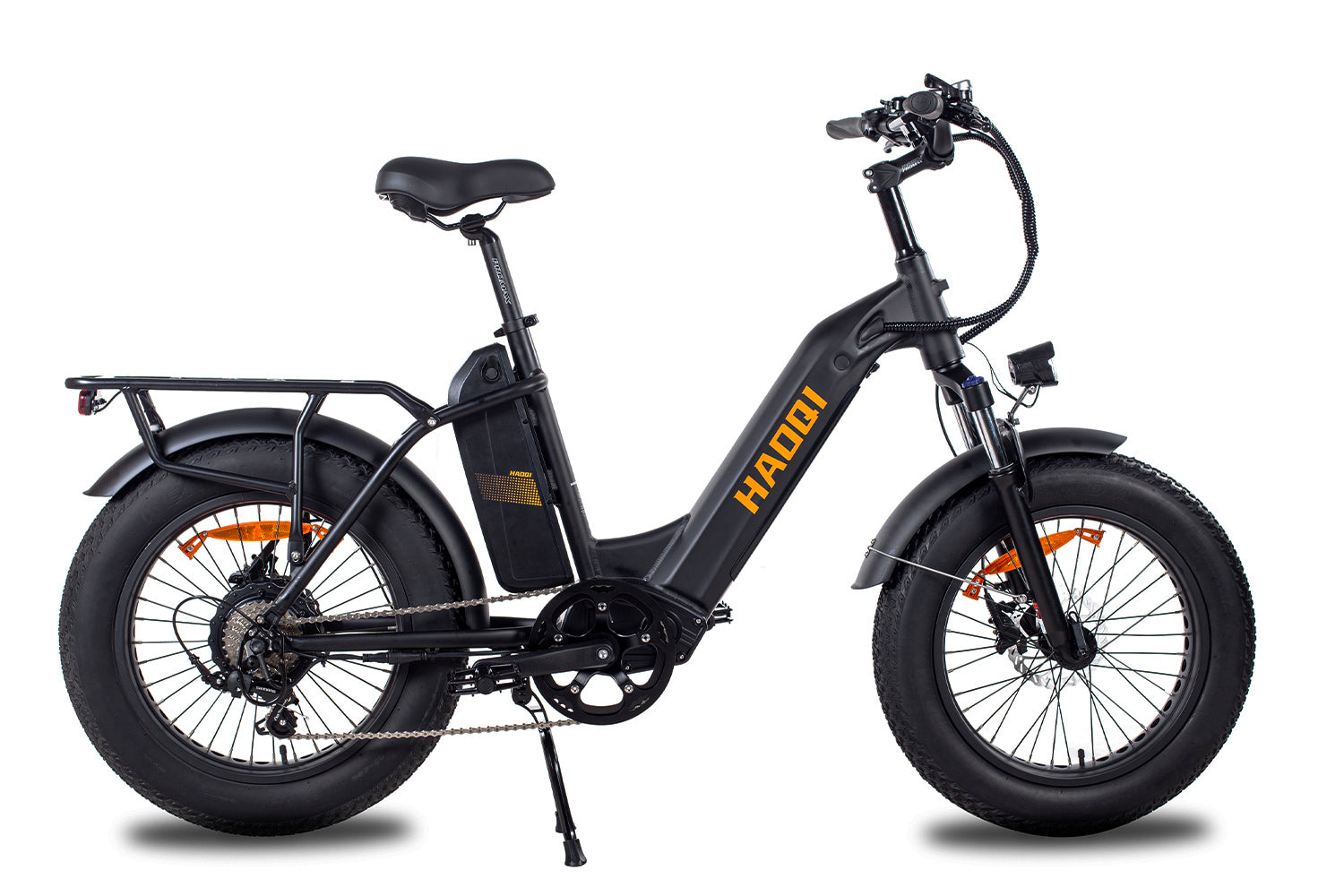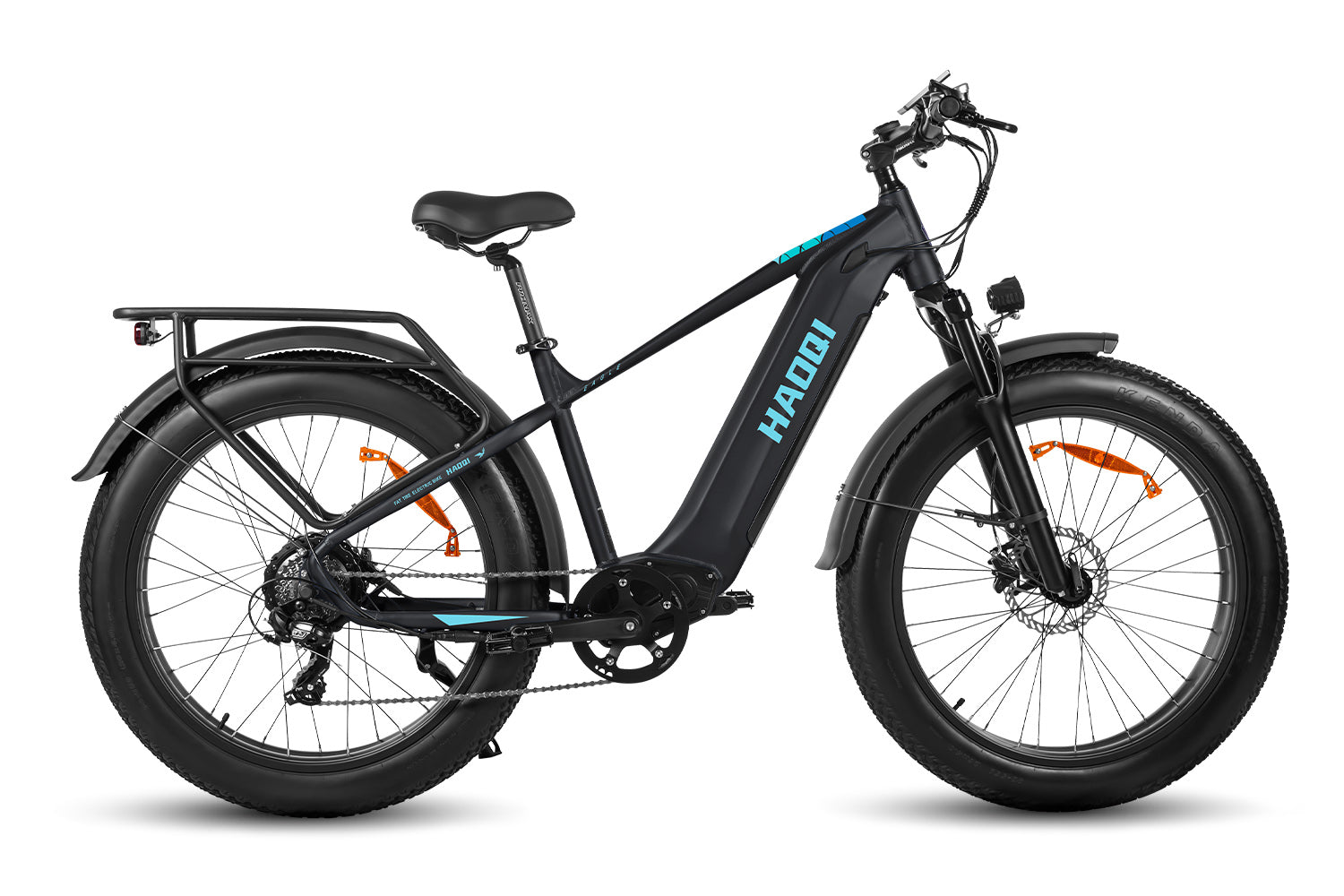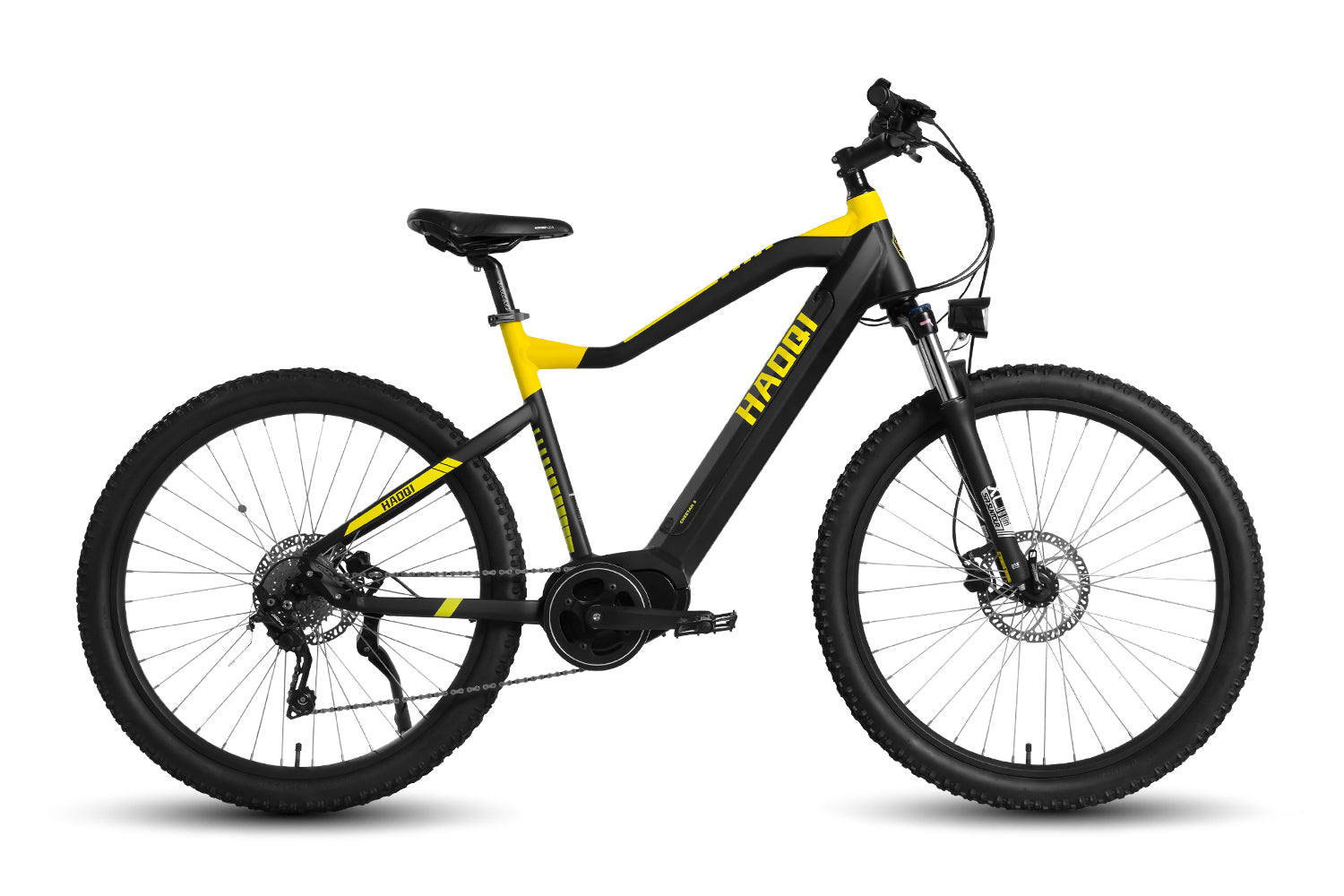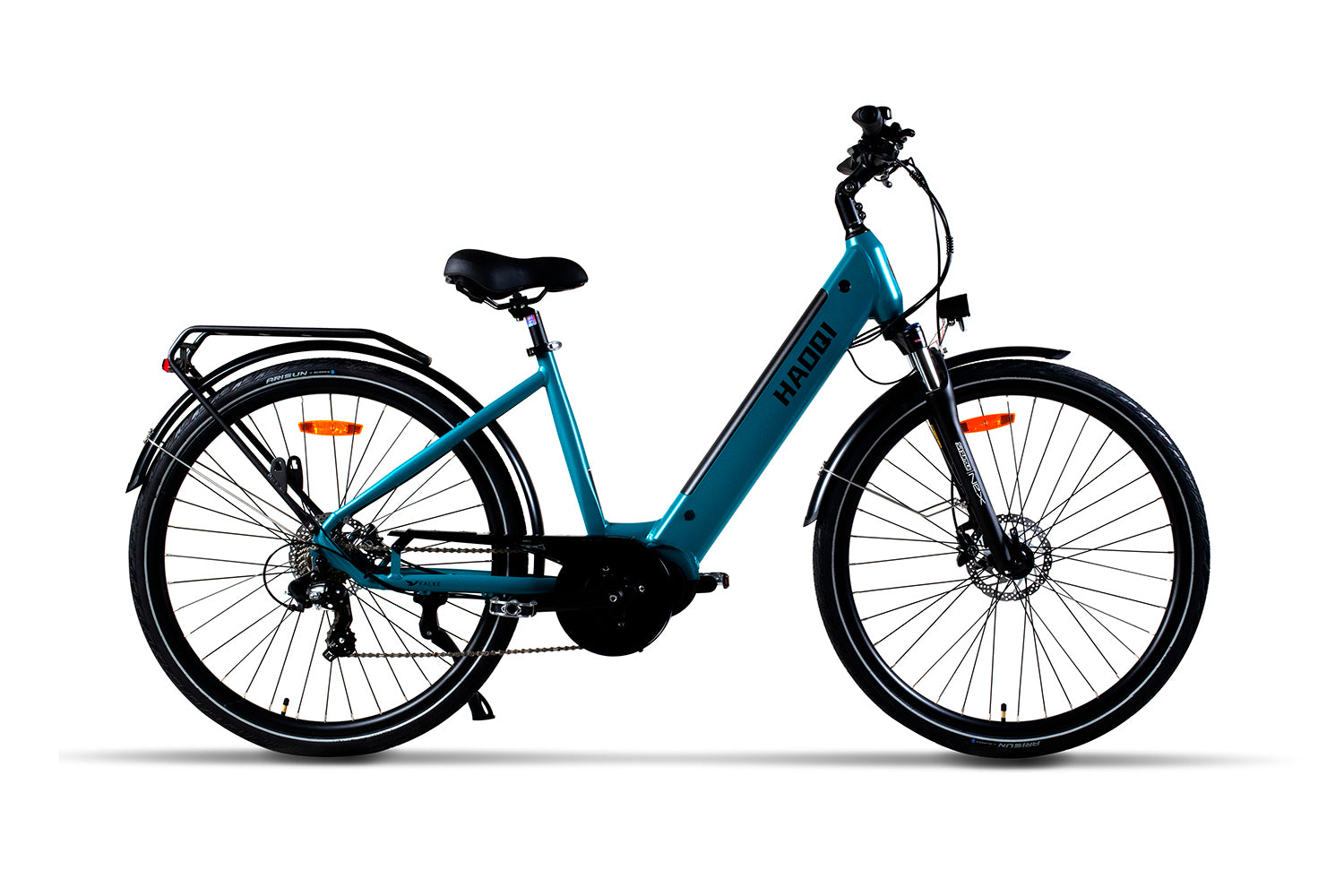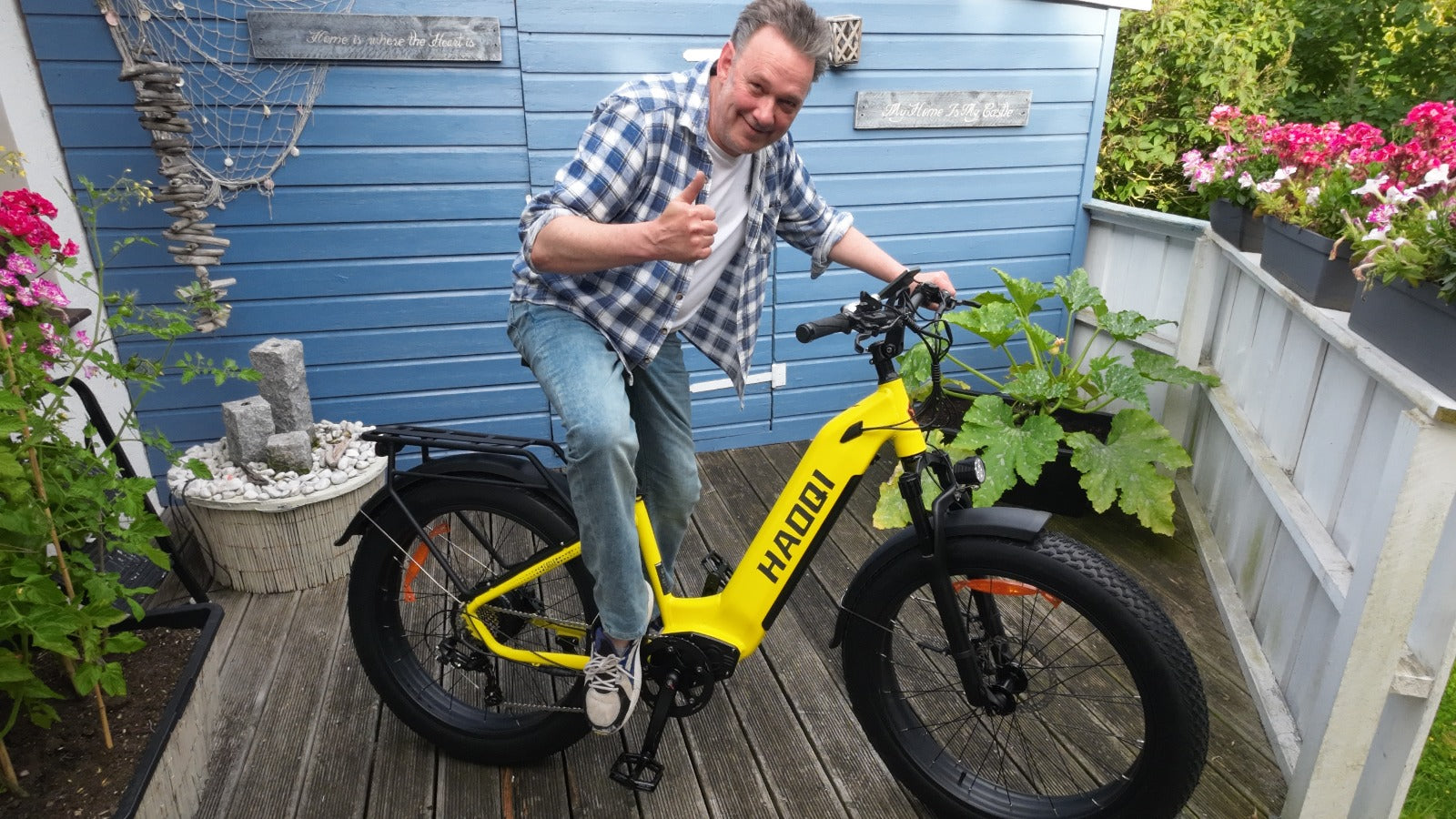Are E-Bikes Easy to Ride? A Guide to E-Bike Mechanics and Usage
E-bikes, or electric bicycles, are growing in popularity as a versatile mode of transport that offers an appealing mix of traditional cycling and motor-assisted propulsion. But are e-bikes actually easy to ride?
In this guide, we'll take a look at how easy it is to ride an e-bike, dive into how it works, and provide practical tips to improve the riding experience. If you're a beginner thinking about buying your first e-bike, read on for all the essential information!

Are e-bikes easy to ride?
E-bikes are designed to enhance the riding experience, making them remarkably easy to ride compared to traditional bikes. The electric motor assists you as you pedal, with the level of assistance adjustable depending on your needs and the terrain. This means you can cover longer distances, tackle inclines and accelerate without feeling much effort or physical strain.
For beginners, the learning curve is minimal. Most e-bikes operate in the same way as regular bikes, with the added benefit of the motor kicking in when needed. This is especially helpful for those who may not be in the best physical shape or are starting to cycle again after a long break.
Modern e-bikes are also equipped with advanced braking systems and ergonomic designs that improve stability and control, ensuring safe riding even at higher speeds or on busy roads.
Additionally, e-bike designs often prioritize comfort and ease of use. Features like step-through frames, upright seating positions, and adjustable handlebars contribute to a more comfortable ride, allowing you to enjoy longer rides without discomfort.
How do e-bikes work?
Understanding the basic mechanics of an e-bike can help you appreciate how they make cycling easier. At the core of an e-bike are three essential components: the motor, the battery, and the controller, which are seamlessly integrated to enhance the riding experience.
-
The Motor : The motor is the heart of an e-bike and provides the extra power needed to pedal. There are usually two types of motors in e-bikes: hub motors, which are built into the front or rear wheel, and mid-motors, which are mounted on the bike's bottom bracket. Mid-motors are particularly effective on steep terrain as they use the bike's gears and provide a more natural ride feel.
-
The battery : The battery acts as a "tank" for the motor. They are usually lithium-ion batteries because they offer long life, high capacity and low weight. The location of the battery can vary; some designs integrate it into the frame of the bike for a sleek look and better balance. The range of an e-bike depends on the capacity of the battery, which is usually between 40 and 120 kilometers per charge, depending on the assistance setting and riding conditions.
-
The Controller : The controller is the "brain" of the e-bike and connects the motor to the battery. It regulates the amount of power delivered to the motor based on rider input via the assist levels. Riders can select different levels of motor assist via a handlebar-mounted display, which also provides information on speed, battery level and distance traveled.
7 Tips for Easy E-Bike Rides
Now that you understand the basic workings of an e-bike , here are some practical tips to make riding electric bikes easier and more enjoyable:
-
Start With The Right Adjustment : Before you start riding, make sure your e-bike is adjusted to your height. This includes the correct seat height, handlebar angle and tire pressure. A well-adjusted bike reduces strain and increases comfort, which is crucial for a pleasant ride.
-
Understand your e-bike's settings : Familiarize yourself with the different levels of pedal assistance and the operation of your e-bike. Knowing how to adjust the settings while you ride will make it easier to adapt to different terrain conditions and your own energy levels.
-
Practice balance : While e-bikes are heavier than traditional bikes due to the additional components like the motor and battery, they also offer better stability. Practice riding in a safe area to get used to the weight and feel of the bike, especially when starting and stopping.
-
Use Gears Effectively : As with a regular bike, using gears effectively can make a big difference. Use lower gears when starting or going uphill, and higher gears on flat or downhill stretches. This will help you use the electric assist more efficiently and extend the life of the battery.
-
Keep the battery charged : Always start your journey with a fully charged battery to avoid running out of power. Regularly charging your battery will also help maintain its health and lifespan.
-
Plan your route : Consider the range of your e-bike and plan your route accordingly. Choose paths that are bike-friendly and avoid rough terrain if you don't feel confident yet. Knowing your route will also help you manage battery usage and ensure there is enough energy for the ride.
-
Regular Maintenance : Like any vehicle, an e-bike requires regular maintenance to perform at its best. Regular checks and maintenance of the brakes, tires, battery and motor can prevent breakdowns and ensure your rides are smooth and safe.
Conclusion
So, are e-bikes easy to ride? As we've seen, e-bikes offer a great mix of traditional cycling and motor-assisted propulsion, making them not only accessible but also a joy for people of all ages and fitness levels. While there may be a small learning curve and some adjustments, the overall experience is considerably easier than riding a traditional bike. By understanding how e-bikes work, following the tips in this article and practicing regularly, you can begin your e-bike adventures with confidence and enjoy the freedom and fun that e-bikes offer.
FAQ
How easy are e-bikes to ride?
E-bikes are very easy to ride. They function in a similar way to regular bikes, but have the added benefit of a motor to assist with pedaling, especially when going uphill or over long distances. This makes them accessible to riders of all fitness levels and makes for a less strenuous and more enjoyable ride. Many e-bikes also have different power levels to control the amount of assistance the motor provides, making them versatile and easy to use.
Can a beginner ride an e-bike?
Yes, even beginners can ride an e-bike. E-bikes are designed to be just as easy to ride as regular bikes, with the added benefit of an electric motor to assist with pedaling. This makes them an excellent choice for beginners as they help to ride longer distances and tackle hills more easily.

